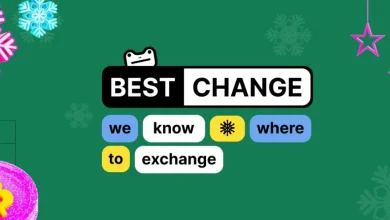
If you’re even remotely connected to the Polkadot ecosystem, you can’t have failed to hear about JAM, the network upgrade first tabled in Dr Gavin Wood’s gray paperback in April. While it’s fair to say the proposal has resonated with the developer community, it’s also fair to say that its implications are not widely understood.
Outside of a few Galaxy brains, most web3 users lack a deep insight into what JAM is and why it’s such a big deal. Well here’s everything you need to know: how JAM works, why it’s being hailed as a breakthrough in blockchain scaling, and the progress that’s being made in decentralizing the clients required for devs to access it aided by a generous bounty program.
What’s JAM?
As described in the very first line of its abstract, Join-Accumulate Machine (JAM) is “a protocol combining elements of both Polkadot and Ethereum.” Dr Gavin Wood was of course a co-founder of Ethereum and the architect of Polkadot and so he knows the working of both blockchains better than anyone. In recent years, Wood’s done a lot of thinking and come to an understanding of the areas in which Polkadot has succeeded and those where it could do better by being “more Ethereum.” JAM is the result.
At present, Polkadot’s parachain system places limitations on what developers can do. JAM is an attempt to remove these constraints, opening the door to a much broader array of services that can run on the relay chain. At the same time, JAM simplifies deployment, making it much easier to launch services on-chain.
Polkadot parachains communicate with the relay chain through XCMP (Cross-Consensus Message Passing), but this is far less fluid than Ethereum’s environment, where smart contracts and ERC20 tokens can communicate seamlessly. JAM is an attempt to replicate this state on Polkadot by removing reliance on the relay chain for things like staking and governance. At the same time, it introduces support for ZK rollups – but more about that later.
There are a lot of strands to JAM, but combined they represent the most radical shakeup of Polkadot in its history and a signal of intent from Dr Gavin Wood and Polkadot core developers. It’s an attempt to integrate many of the best blockchains innovations to have emerged in recent years while retaining the parachain design with which Polkadot is synonymous.
Greater Control Without Sacrificing Decentralization
Blockchain concepts, by their nature, start centralized in that they are the work of one individual or of a small group. It was the case with Bitcoin, Ethereum, and every other web3 network. It’s only through broad community adoption and developer support that the implementation of these ideas can be realized in a decentralized manner that is inherent to their survival. So it is with JAM, with Web3 Foundation on a mission to incentivize the development of as many clients as possible.
It’s seeking clients developed in different programming languages so that the developer community can access the JAM implementation of their choice. To facilitate this, it’s hosting a bounty program that’s seen 10M DOT and 100K KSM made available to successful developer teams. A panel of judges will determine the best submissions and allocate the generous prize pool accordingly. These clients will be how Polkadot developers interact with JAM and create applications leveraging its technology.
Big Benchmarks and Rapid Rollups
JAM will significantly enhance the throughput and scalability of Polkadot, opening the door to a host of new use cases. It will support dapps that require massive amounts of computation, making it ideal for things like AI workloads, high-frequency trading, and gaming. The benchmarks that have been quoted are impressive: thanks to parallel processing JAM will support around 350 cores with a total input of around 2.3 Gps. That’s 3x more than parachains can currently deliver.
Another feature that JAM will unlock is the integration of ZK rollups, which will help to further scale Polkadot and power yet more use cases. Privacy in particular is going to get a lot better with developers able to call upon ZK proofs to mask sensitive financial data, which is sure to be of interest to enterprises who like the idea of public blockchains but have concerns over their current architecture.
As with any novel technology, it’s developers and tech geeks who’ve been first to latch onto JAM and appreciate its vast potential. But once dapps, platforms, parachains, and rollups start to be created using JAM, it will be the turn of consumers to appreciate what a game-changer it is for Polkadot. Just as it took a few years for ZK proofs to become ubiquitous, with widely available tooling and simple deployment, JAM won’t magically appear overnight. But make no mistake, its adoption will, as they say, move the needle for web3.
Trust with CoinPedia:
CoinPedia has been delivering accurate and timely cryptocurrency and blockchain updates since 2017. All content is created by our expert panel of analysts and journalists, following strict Editorial Guidelines based on E-E-A-T (Experience, Expertise, Authoritativeness, Trustworthiness). Every article is fact-checked against reputable sources to ensure accuracy, transparency, and reliability. Our review policy guarantees unbiased evaluations when recommending exchanges, platforms, or tools. We strive to provide timely updates about everything crypto & blockchain, right from startups to industry majors.
Investment Disclaimer:
All opinions and insights shared represent the author's own views on current market conditions. Please do your own research before making investment decisions. Neither the writer nor the publication assumes responsibility for your financial choices.
Sponsored and Advertisements:
Sponsored content and affiliate links may appear on our site. Advertisements are marked clearly, and our editorial content remains entirely independent from our ad partners.








